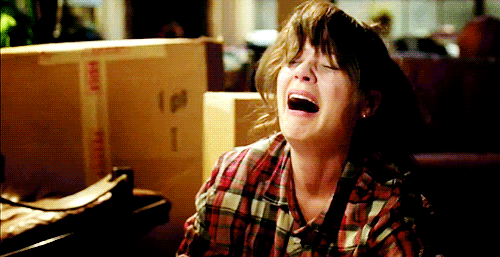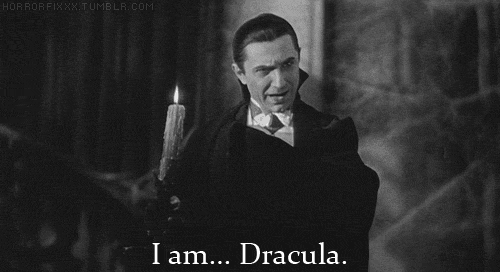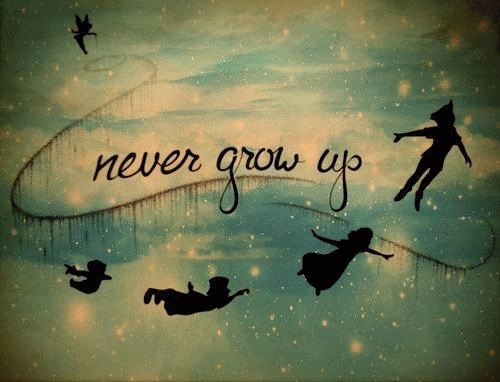Emily
Bronte's 1847 Gothic romance novel, Wuthering Heights, can easily be analysed
and critiqued through a feminist lens. The novel is seen by many critics as a
novel that introduced a change in the way women were coming to be observed in
society and how things were changing for women, thus making this novel a controversial
one. Bronte conveys this change in society not only through female characters
such as Catherine Earnshaw, but surprisingly through Heathcliff's character
also.
The
Victorian period was a hard time for women as they had to measure up to what
was expected of them. For example, the Victorian feminine ideal was a woman
that was 'the angel in the house'; a feminine figure that ensured hospitality
and a moral guide, and also to be a paragon of virtue. Women were to be molded
into this ideal and were expected to live by it. Catherine is seen by many as a
feminist role model and her independence in the beginning of the novel
separates her from the female norms of this period. Catherine doesn't care for
dresses and being pretty she would much rather play on the moors with
Heathcliff barefoot. However we see how Catherine eventually falls into being a
lady through her transformation at Thrushcross Grange. Nelly refers to
Catherine's transformation as a "reform" (Bronte, 1847, pg. 63) This
shows the audience to see how a woman can't lead a carefree life in Victorian
society, the conventions give security for women. Lyn Pykett explains how
Catherine's transformation illuminates the power of the social production of
female gentility. Furthermore, we see how her personality changes with the
change in her appearance. As Catherine confides in Nelly Dean about her
acceptance of Edgar's hand in marriage, we discover how her place as a woman in
society has been persuaded by the conventions that have been set up for women.
Social ambition is what motivates her now, not her wild passions and love. She
explains "It would degrade me to marry Heathcliff now; so he shall never
know I love him" (pg. 86). Here we see how Catherine has moved from
changing the conventions on her own terms, too succumbing to the conventions
for women.
As Catherine
succumbs to becoming a lady, Heathcliff also falls into a position of equal
powerlessness. Heathcliff is disempowered due to him being dark skinned and
"gipsy in aspect" (pg. 27), he has no prospects and isn't heir to any
money or property. This way Heathcliff can be read as a male character with a
female position in society. He is not eligible. Edgar is the one who is always
referred to as 'the master' and is the one who has all the power and
masculinity. Heathcliff is feminine next to Edgar and he is dispossessed, ruled
by the father and an outcast from society with his unknown background. The fact
that Catherine spoils her own destiny and accepts Edgar to be her husband is a display
of the struggle for women in society. Money and property was a key aspect of
acceptance. Because Heathcliff isn't worthy in societies eyes (despite being
worthy in Catherine's eyes) she goes against her own wishes and hearts desires.
Despite Catherine's
rejection of Heathcliff for a better life, they both end up in the same
condition at the end of the novel; unable to eat and feverish. There are
suggestions that Heathcliff is a complimentary part of Catherine throughout the
novel. First he is the manifestation of Catherine's desire for a whip. He is
"a complimentary addition to her being who fleshes out all her lacks"
(pg. 265). Then Catherine states that "he is more myself than I am"
(pg. 88) and also Heathcliff arranges for his body to merge with Catherine's
after death so that they become indistinguishable. All of these points
collectively support the idea of Heathcliff being portrayed as a female type
character. Furthermore, the fact that he is dis-empowered and is characterized
as the female puts more strain on his relationship with Catherine and pushes
them further apart. The idea that they won't fit together becomes more
apparent.
Female
writers in the Victorian period were directed to abstain from writing social
and political criticism in their work in their work because of their restricted
position as female writers in the literary world. Critics have argued that the
rural and remote setting of Wuthering Heights can be a representation of
women's remote position from society and modern industry.
Wuthering
Heights has attracted a large number of feminist critics due to the
autobiographical nature of the novel. Emily Bronte would have drawn on her
personal experiences as a female in a society where women were highly inferior
to men. Feminists readings of the novel illuminate the focus on a "female
tradition" in Victorian literature. Bronte can be seen as started a new
female tradition with this female empowering novel. Lyn
Pykkets essay titled "Changing The Names: The Two Catherines"
(Pykett, 1989, pg. 86) highlights the mirroring of both Catherine and Cathy.
Pykett supports my point that Emily Bronte's views are shown through the novel
and its plot is contradictory to the ideas of women during the period. For
example, Catherine's marriage to Edgar should have resolved her issues and
fulfilled her social ambition but instead it deepens her problems. Catherine's
inner conflict begins when she is still a child. Catherine begins life as a
carefree, independent female who is more concerned with nature and being
outdoors than the domestic sphere and its constraints. This is the beginning of
her inner conflict; who she is inside and who she is expected to be. Lyn Pykett
explains the "difficulties of trying to be the heroine of one's own life in
a social and domestic milieu which cannot provide a theater for heroinism"
(pg. 92) . She adds on the point
that Catherine's sense of power does not leave her with a feeling of self
fulfillment. I agree with this point indefinitely but it is also apparent that
the only way Catherine can or would achieve complete self fulfilment would be
if she could be with Heathcliff, he is her counterpart and soul mate. The
social constraints that restrict Catherine is what prevents her from reaching
the fulfillment that she so desperately sought after.
It is
interesting to look closer at Cathy's character and question whether or not she
is a representation of what Catherine's life would have been like lest she
refused Edgars hand in marriage. It has been discussed that Cathy and Hareton's
relationship can be interpreted as similar to the relationship that Catherine
and Heathcliff would have shared, had they become a couple and obviated the
social normality's that protruded on their daily lives and caused them such heartache.
It is exciting to watch Cathy and Hareton's relationship as it acts out what we
as an audience so desperately wanted to see happen with Catherine and
Heathcliff. Pykett describes Heathcliff as "an unfulfilled possibility, a
route not taken" (pg. 469). However, the fact that Heathcliff and
Catherine could not be together adds to the realism of the novel and is needed
in the plot to give a truthful image of the feminine inferiority of the
Victorian period. Situations similar to what Heathcliff and Catherine undertake
would have been common and it is the fact that we know that Catherine wants to
abstain from the marital traditions and rebel is what makes this novel both
interesting and controversial. The truthfulness of Catherine's struggle in the novel
is what makes Wuthering Heights so open and appealing to feminist criticism and
furthermore, historical criticism.
The
beginning of the novel and indeed the most part of it is key in deciphering the
story of Catherine Earnshaw. Lockwood is the one who discovers her late
identities scratched into paint in his quarters during his visit to Wuthering
Heights. Lockwood's revelation of the writings is an important part of the
narrative as it lays out Catherine's journey through her relationships and maps
out the stages of her feelings before we learn about them.
Lockwood reads:
"This writing was nothing but a name repeated in
all kinds of characters large and small -
Catherine Earnshaw, here and there varied to
Catherine Heathcliff, and then again to Catherine Linton" (pg. 38). The
variation of both the style of writing and placement can be seen as a
representation of the mixture of emotions that Catherine endured and also the
uncertainty in her life. This moment when Lockwood discovers her graffiti is
what sets up the narrative for us and fires up our curiosity. Furthermore,
Catherine writing down two marital names would have been very unusual to a
Victorian audience. It is another instance where feminist criticism thrives as
having two marital names suggests that Catherine was married twice at first
glance. This would have been both interesting to an audience and recognized as
a rarity to most. Both names circulate through the text and each name is
associated with a different aspect of Catherine's personality. When she is
Catherine Linton, she is posing as the person society wants her to be, the
person she is expected to be in both the public sphere and the private sphere;
the 'angel in the house'. As Catherine Heathcliff, she is who she wants be, who
she really is. As we journey through the novel, we become more sympathetic
towards Catherine in relation to her writing Heathcliff as her surname. This is
because we can see that she knows she can never be Catherine Heathcliff but
amidst her real title as Catherine Linton, her desire to be Heathcliff's wife
is still present.
The novel as
a whole raises the question 'What is a woman?' or 'What does a woman want?'.
Both questions are essentially based around Catherine's inability to choose
between two men. This is a typical plot that a Victorian romance novel would
follow, however, Bronte defines the plot in her novel by displaying the
difficulties living as a woman. Catherine is interpreted as the heroine in the
novel, however, she can't be the heroine of her own life because she is doomed
by her gender. She has no authority where she needs it most. Bronte uses the
question "What Is a woman?" and shows us what a woman really is, and
what she has to be. Catherine is the creator of feminism in the novel. Wuthering
Heights represents a new age in literature and a change in a dominantly
patriarchal society.
Bibliography
- Bronte,
E. (1847) Wuthering Heights. Hertfordshire:
Wordsworth Editions Limited. -
Gilbert, S & Gubar, S. (1979). The
Madwoman in the Attic: the Women Writer and the Nineteenth-Century Literature
Imagination. [Online] Available:
- Peterson,
L. (2003) Wuthering Heights: Case Studies
in Contemporary Criticism. 2nd edn.
London: PALGRAVE.
- Pykett,
L. (1989) Women Writers: Emily Bronte.
USA: Barnes & Noble Books. -
Senf, C. (1985) Emily Bronte's version of
Feminist History: Wuthering Heights. [Online] Available:









.jpg)

